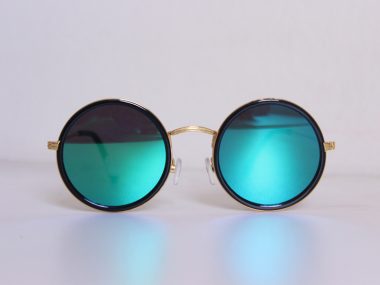Why is blue light filter so popular these days?
From sleep to mood, health to productivity, everything is affected by blue light. Why is it making so much difference suddenly, was it not a part of our lives, till now? Since blue light is predominantly scattered from the sun, it was present on the earth right from the inception but Thanks to modern digital technology, blue light is now brought right inside our homes.
According to American Optometric Association, over 62% of respondents spend more than 5 hours every day on digital devices. So certainly, you are more exposed to the artificial blue light as compared to the natural sun, which is why it is having a negative impact on our health.
Let’s first understand this buzzword!
What is blue light?
Light is made of electromagnetic particles, these particles travel in waves and these waves transmit energy. Shortest wavelength is said to emit highest energy. This wavelength is measured in nanometers (nm). Each wavelength is demonstrated in different colour
and is divided into different categories, namely – gamma rays, x-rays, ultraviolet rays, visible light, infrared light and radio waves. All these wavelengths together is called the electromagnetic spectrum.
The electromagnetic spectrum of visible light is made up of – Violet, Indigo, Blue, Green, Yellow, Orange and Red. Blue end of the light in this spectrum, with the shortest wavelength holds the highest energy portion.
It easily flickers due to which vision clarity and sharpness gets hampered and further causes eye strain or can even permanently damage your eyes.
1 nm = 1 billionth of a meter

Where is all this blue light coming from?
Blue light is everywhere, indoor, outdoor, home, office. In short, wherever you find sun and digital devices, you will find blue light. The Sun is a natural source while artificial source of blue light comprises laptops, mobile phones, computers, televisions, LED lights, fluorescent bulbs.
Benefits and negative effects of blue light
You are exposed to blue light all the time, do you feel concerned? It’s not all that bad. Everything has a good and bad side, even blue light.
Good side of blue light:
- The natural blue light emitted from the sun helps to manage the circadian rhythm. It regulates the body’s wake and sleep pattern.
- It uplifts mood and also keeps you alert all day.
- Mental process of perception becomes strong.
Bad side of blue light:
- When exposed to blue light at night, the circadian rhythm gets disrupted.
- Prolonged exposure to blue light emitted from digital devices causes blurry vision, red eyes, dry eyes, itchiness, Computer Vision Syndrome, neck pain, headache and back pain.
- Blue light also increases the risk of depression, obesity and heart diseases.
- Exposure to blue light also results in severe vision conditions like age-related macular degeneration which can further lead to vision loss.
Lack of natural blue light exposure can cause myopia (nearsightedness).

Myths and facts about blue light
Among all the information you hear and read about blue light, there are many myths around. It’s better to know both the myths and facts to eliminate all the confusion about blue light.
Myth: Digital devices are the only source of blue light
As already said before, blue light is everywhere, not just digital devices, modern light like LED lights, fluorescent bulbs and even the sun emits the blue light.
Fact: Sun is the natural and biggest source of blue light
Around 30% of daylight consists of blue light and is almost 100 times greater than the light emitted from digital devices.
Myth: Every digital screen has equal effect on eyes
Prolonged exposure to any digital screen is harmful, however as per studies, smartphones are more dangerous for your eyes as you hold it up close than any other device. The more your device is close to your eyes, the more it can damage your eyes.
Fact: Blue light is more harmful than UV light
Both are actually dangerous but since we are more exposed to blue light than UV while it also directly triggers the eye nerve that causes strain, blue light is proven to be more harmful.
Myth: You cannot save your eyes from blue light
Fortunately, it’s a myth. You can follow the simple 20-20-20 rule while working on digital devices, look away from the screen for 20 seconds, at something 20 feet away after every 20 minutes, this will relieve your eyes from strain.
Fact: Blinking can also reduce the effect of digital eye strain
When was the last time you blinked? You do blink but not as often as you need. Constant staring at screens has reduced the blink rate which results in eye strain and dry eyes. Make sure you blink often so that moisture is retained and your eyes stay lubricated.
Should we be concerned about the blue light?
Matter of concern, right?
Our eyes are not designed to filter the harmful artificial blue light. Hence, prolonged exposure can result in minor as well as major vision problems, to the worse can also lead to vision loss. Especially, blue light at night can have detrimental effects on our health.
Where is increased exposure to blue light coming from?
The wide-spread use of digital devices is the prime reason for increased exposure of blue light. These electronic devices are made up of LED backlight technology which emits very high energy blue light waves. Since, not a single day is spent without these gadgets, the exposure to blue light is gradually increasing.
Negative impact of blue light on our health
If you limit the exposure of blue light or just get exposed to natural blue light during the daytime then it might help you in elevating your mood and concentration. But unfortunately, long day staring at computer or smartphones only affect your health in a negative way.
- Extended screen time or gawking at the smartphones in dark disrupts the circadian rhythm and cause sleeplessness.
- It increases the risk of depression.
- Blue light also results in obesity and diabetes.
Night exposure to blue light also increases the risk of different types of cancers
Harvard Research
Negative impact of blue light on our eyes
Right from the time we wake up till the time we sleep, we several times make eye contact with digital devices that results in serious vision problems.
- The bad flickering light cause fatigue and dry eyes.
- Prolong screen viewing causes red eyes and blurred vision.
- One of the most common vision problems reported is Computer Vision Syndrome.
- Studies suggest that overexposure to blue light can damage the retinal cells which can further lead to macular degeneration
- Age-related macular degeneration is one of the leading causes of vision loss.
- There is also medical evidence stating blue light exposure leads to permanent vision damage.
- Retinal degenerative diseases can also be expected due to chronic blue light exposure.
Why macular degeneration is increasing due to blue light?
Melanin is a substance present in the skin that acts as natural sunscreen protection. The more melanin present, the more your body stay protected from the harmful UV and blue light. However, with age the melanin starts reducing and by 65 you almost lose half of the melanin. This is when your eyes are at risk.
The blue light spectrum possibly damages the retinal cells which mostly leads to age-related macular degeneration. The visible blue light of high energy penetrates into the macular pigment present in the eye which increases the risk factor for macular degeneration.
Solution to protect your eyes from the dangerous blue light
There are a few effective ways to reduce the effect of blue light exposure:
- Reduce screen time as much as possible, at least during night.
- Give your eyes rest by taking frequent breaks from the screen.
- Try 20-20-20 rule, take 20 seconds break from the screen, look at something 20 feet away after 20 minutes.
- Blink more often to retain moisture in your eyes.
- Apply blue light protection filter on digital screens to reduce the amount of harmful light from reaching your retina.
- Talk to an eye care professional and get to know feasible solutions to safeguard your vision.

Time-tested solution to relieve your eyes from digital eye strain
Investing in good blue light filter glasses is a wise solution. When staring at digital screens, wear the computer glasses blue light glasses as it increases the contrast and drastically reduces the blue light from reaching your retina.
You can also go for glasses with an anti-reflective coating as it helps to reduce glare, increase contrast and cut down the negative impact of blue light.
Whether it’s sun or digital devices, everybody encounters blue light on everyday basis, so taking protection against blue light is a must.







